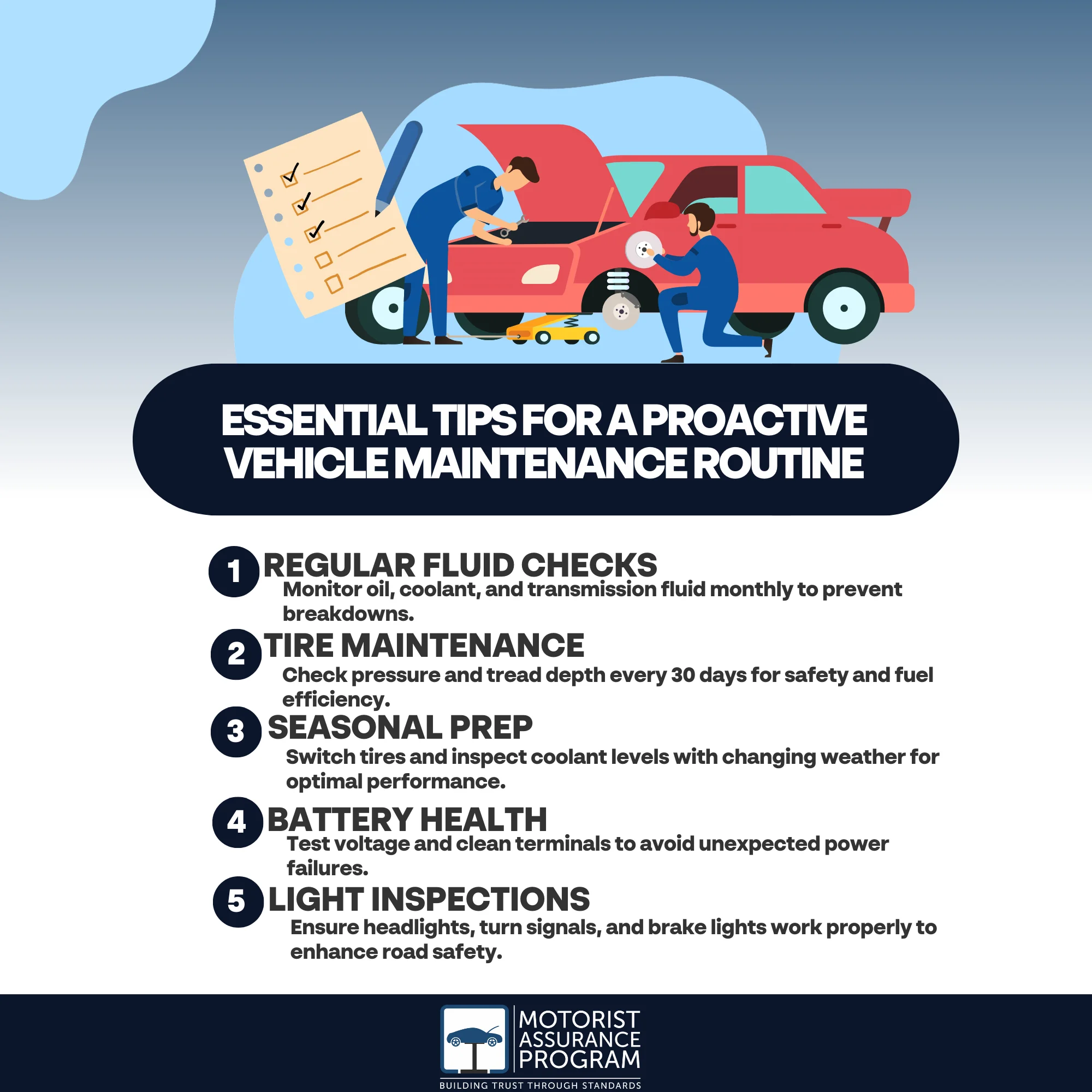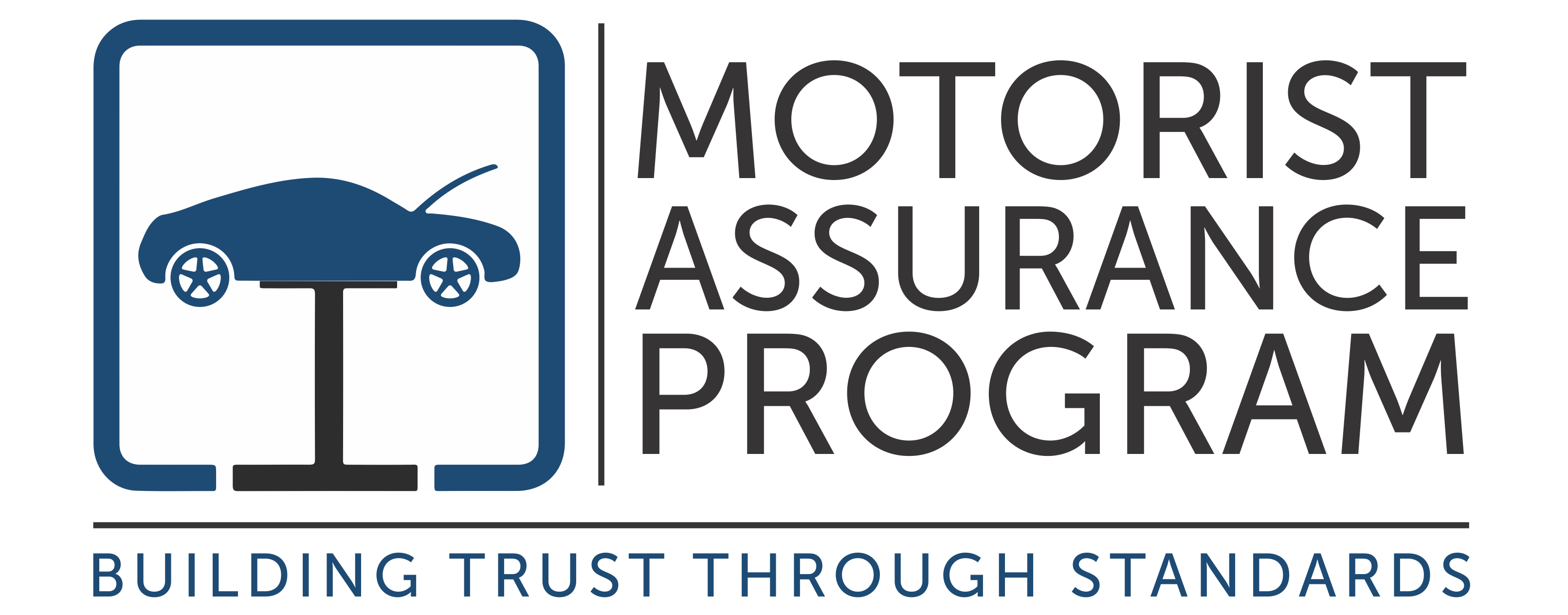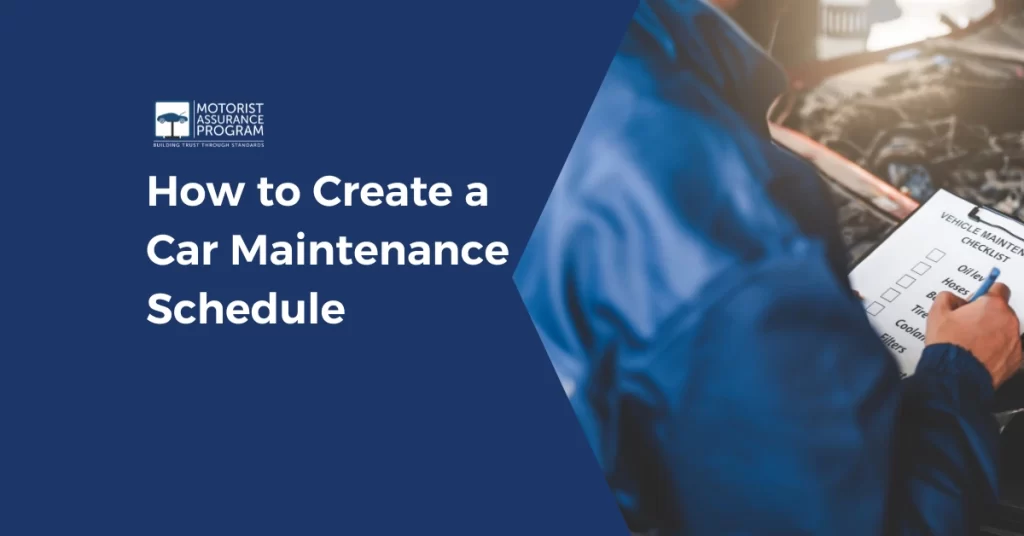To create a car maintenance schedule, start by listing essential tasks and their recommended frequencies. Check oil and coolant levels monthly for peak performance. Inspect air filters and tire pressure every 12,000 to 15,000 miles, guaranteeing safety and efficiency. Evaluate lights, including headlights and turn signals, regularly to ensure visibility. Replace windshield wipers every six months or as needed. Monitor battery performance and perform seasonal tire changes based on weather conditions. Keep a record of each maintenance task to track progress. Developing a systematic approach to these checks will keep your vehicle running smoothly and avoid costly repairs down the road.

Key Takeaways
- Assess your vehicle’s manual for specific maintenance intervals and recommended checks for oil, coolant, and other fluids.
- Create a monthly checklist for vital components, including tire pressure, air filters, and lights, to ensure safety and performance.
- Schedule fluid changes based on mileage, such as coolant and transmission fluid, to prevent overheating and mechanical issues.
- Include seasonal tasks like switching to winter tires and battery performance checks to adapt to changing weather conditions.
- Keep a record of all maintenance performed, noting dates and mileage, to track when services are due.
SHORT TERM CHECK-UPS
Short-term check-ups are key to maintaining your vehicle’s performance and safety. You should regularly inspect oil and coolant levels, air filters, tire pressure, tread depth, and all lights, including headlights and turn signals. These quick assessments can prevent more significant issues and guarantee your car runs smoothly.
OIL AND COOLANT LEVELS
Maintaining proper oil and coolant levels is integral for your vehicle’s performance and longevity. Regularly checking these fluids should be a key part of your car maintenance schedule. Oil lubricates engine components, reducing friction and wear, while coolant prevents overheating by regulating engine temperature.
For a thorough car preventive maintenance schedule, check your oil level at least once a month. Use the dipstick to ensure it’s at the ideal level and that the oil isn’t dirty or gritty. If you notice a drop in oil level, inspect for leaks and replace the oil if necessary, adhering to your vehicle’s specifications.
Coolant should also be inspected monthly. Make sure the coolant reservoir is filled to the recommended level. If you find the level low, top it up with the appropriate coolant mixture. Also, check for any signs of leaks or corrosion in the cooling system.
Incorporating these checks into your routine car maintenance schedule can prevent costly repairs and improve your vehicle’s reliability. By staying proactive with oil and coolant levels, you’re guaranteeing ideal performance and extending your vehicle’s lifespan.
AIR FILTER
The air filter plays an essential role in your vehicle’s performance by guaranteeing that clean air enters the engine for ideal combustion. A clogged or dirty air filter can restrict airflow, leading to reduced engine efficiency and increased fuel consumption. To maintain peak performance, you should include air filter checks in your car maintenance schedule checklist.
As part of your regular car maintenance schedule, inspect the air filter at least every 12,000 to 15,000 miles, or as recommended in your vehicle’s manual. If you often drive in dusty or polluted environments, consider checking it more frequently. Replacing the air filter is a simple task that can greatly impact engine performance, guaranteeing that it runs smoothly and efficiently.
Following the recommended car maintenance schedule will not only increase your vehicle’s fuel efficiency but also extend its lifespan by preventing potential engine issues. Keep in mind that an effective air filter contributes to a cleaner environment by reducing harmful emissions. Make sure to stay proactive about this key component to guarantee your vehicle operates at its best.
TIRE PRESSURE AND TREAD DEPTH
Keeping an eye on tire pressure and tread depth can considerably improve your vehicle’s safety and performance. Regular checks should be a key part of your car maintenance schedule by mileage or time.
Ideally, you should inspect tire pressure every month and before long trips. Use a reliable gauge to guarantee your tires are inflated to the manufacturer’s recommended PSI, which you can usually find on a sticker inside the driver’s door or in the owner’s manual.
Tread depth is equally important, as it affects traction and braking. You can easily check this using the penny test: insert a penny into the tread with Lincoln’s head facing down. If you can see all of Lincoln’s head, it’s time to replace those tires.
Incorporating these checks into your general car maintenance schedule will help prevent premature tire wear and improve fuel efficiency. For a basic car maintenance schedule, consider marking these tire checks on your calendar. This proactive approach can save you money and boost your driving experience while guaranteeing you stay safe on the road.
HEADLIGHTS, TURN SIGNALS, BRAKE, AND PARKING LIGHTS
Regularly checking your headlights, turn signals, brake lights, and parking lights is crucial for ensuring your safety on the road. These components are imperative for visibility and communication with other drivers, especially during low-light conditions. To incorporate this into your new car maintenance schedule, set a routine check every month or after long trips.
Begin by inspecting your headlights for clarity. If they appear cloudy or dim, consider replacing them. Next, test your turn signals; they should blink at a consistent rate. If they don’t, it might indicate a burnt-out bulb or an electrical issue. For brake lights, enlist a friend to help you confirm they’re functioning properly when you press the brake pedal.
Finally, check your parking lights, ensuring they’re operational for nighttime parking.
OIL & FILTER
After ensuring your lights are functioning properly, focus on maintaining your engine’s oil and filter. Regular oil changes are vital for your vehicle’s performance and longevity. Check your owner’s manual for recommended oil change intervals, which typically range from 3,000 to 7,500 miles, depending on the type of oil used.
Start by checking the oil level using the dipstick. If it’s low, add the appropriate oil type as specified in your manual. Look for signs of contamination, such as a dark or gritty texture; if the oil appears dirty, it’s time for a change.
When changing the oil, always replace the oil filter. A clogged filter can restrict oil flow, leading to engine damage. Use an oil filter wrench to remove the old filter and apply a small amount of new oil to the rubber gasket of the new filter before installation.
After draining the old oil and installing the new filter, pour in the fresh oil, ensuring you use the correct viscosity. Run your engine for a few minutes, check for leaks, and recheck the oil level to ensure cit’s within the proper range.
ROTATE TIRES
Rotating your tires every 5,000 to 7,500 miles helps guarantee even tread wear and extends their lifespan. This practice is vital because front and rear tires experience different levels of stress. In most vehicles, the front tires handle more weight and steering forces, leading to quicker wear. By switching their positions, you promote uniform wear across all tires.
When you rotate your tires, follow the manufacturer’s recommended rotation pattern, which can vary depending on your vehicle’s drivetrain. Common patterns include front-to-back, side-to-side, and crisscross. Ensure you also check tire pressure before and after the rotation. Maintaining the correct pressure optimizes performance and fuel efficiency.
While performing the rotation, inspect the tires for any signs of damage, such as cuts or bulges. Also, check the tread depth; uneven wear may indicate alignment or suspension issues that require further attention. Regular tire rotations not only increase safety but also improve handling and traction.
Incorporating tire rotation into your maintenance schedule is a simple yet effective way to prolong the life of your tires and keep your vehicle running smoothly. Don’t overlook this key step in your car care routine.
WAX VEHICLE
- Clean the Surface: Wash your car thoroughly to remove dirt and contaminants. Use a pH-balanced car soap to avoid stripping the paint.
- Dry Completely: Use a microfiber towel to dry the surface, ensuring no water spots remain.
- Apply Wax: Use a high-quality wax, either liquid or paste. Apply it in circular motions using an applicator pad, working in small sections for even coverage.
- Buff the Wax: After the wax sets (check the product label), use a clean microfiber cloth to buff the surface, enhancing the shine and ensuring a smooth finish.
LONG TERM CHECK-UPS
For effective long-term vehicle maintenance, you’ll need to focus on key components that can greatly impact performance. Regularly checking transmission fluid, transfer case fluid, and inspecting shocks and struts are key components to ensuring your car runs smoothly. Scheduling coolant fluid exchanges and replacing spark plugs can also maximize engine efficiency and longevity.
TRANSMISSION FLUID
Transmission fluid plays an essential role in ensuring that your vehicle’s transmission operates smoothly and efficiently. Over time, this fluid can degrade, leading to potential transmission issues. To maintain ideal performance, it’s vital to include long-term check-ups for your transmission fluid in your maintenance schedule.
Here are four key steps to follow:
- Check Fluid Level: Regularly inspect the transmission fluid level using the dipstick. Low fluid levels can lead to overheating and damage.
- Inspect Fluid Condition: Look for changes in color or consistency. Fresh fluid is typically red and clear. If it appears dark or has a burnt smell, it’s time for a change.
- Change Fluid on Schedule: Follow your manufacturer’s recommendations for fluid replacement intervals. This can vary based on driving conditions and vehicle type.
- Flush System When Necessary: If you notice performance issues or contamination, consider a complete transmission flush to remove old fluid and debris.
TRANSFER CASE FLUID
While many drivers overlook the importance of transfer case fluid, maintaining it is crucial for the proper functioning of your vehicle’s drivetrain. The transfer case is responsible for distributing power from the transmission to the front and rear axles. If the fluid becomes contaminated or degrades over time, it can lead to increased wear and potential failure of the transfer case.
You should check the transfer case fluid level at regular intervals, typically every 30,000 to 50,000 miles, or as recommended by your vehicle’s manufacturer. To do this, locate the fill plug on the transfer case. Remove the plug and check if the fluid is at the correct level; if it’s low, add the appropriate fluid type specified in your owner’s manual.
Also , consider performing a fluid change every 50,000 miles, or sooner if you notice any signs of contamination, such as a burnt smell or dark coloration. Regularly inspecting the fluid helps guarantee peak performance and longevity of your vehicle’s drivetrain.
Keeping an eye on the transfer case fluid will save you from costly repairs down the road, ensuring a smoother driving experience.
INSPECT SHOCKS AND STRUTS
Regularly inspecting your vehicle’s shocks and struts is vital for maintaining a smooth and safe ride. These components play a crucial role in your suspension system, helping to absorb bumps and maintain tire contact with the road.
Here’s how you can effectively check them:
- Visual Inspection: Look for any signs of physical damage, such as dents or leaks. Oil on the struts indicates a failure.
- Bounce Test: Push down on each corner of your car. If it bounces more than twice, your shocks or struts may be worn out.
- Listen for Noises: Pay attention to any unusual sounds, like clunking or rattling, when driving over bumps or rough surfaces. These could indicate internal damage.
- Check Alignment: If your vehicle pulls to one side or experiences uneven tire wear, it might be time to inspect your shocks and struts.
COOLANT FLUID EXCHANGE
Over time, coolant can break down and lose its effectiveness, so it’s important to stay on top of fluid exchanges. Regular coolant fluid exchange helps maintain your vehicle’s cooling system, preventing overheating and potential engine damage. Typically, you should consider a coolant exchange every two to four years or as specified in your owner’s manual.
To perform a coolant exchange, start by verifying the engine is cool. Locate the radiator cap and remove it carefully. Then, drain the old coolant from the radiator and engine block, ensuring you follow local regulations for disposal.
Next, flush the system with water to remove any remaining debris. Once the system is clean, add the recommended coolant mixture—usually a 50/50 blend of coolant and distilled water. Make sure to check for any leaks in hoses or connections after refilling.
Always monitor the coolant level regularly and top off as needed. It’s also wise to check the coolant’s pH and freeze protection levels annually to guarantee peak performance. By staying proactive with coolant fluid exchanges, you’ll boost your vehicle’s reliability and extend its lifespan.
SPARK PLUGS
Monitoring spark plugs is crucial for maintaining engine efficiency and performance. These small but vital components ignite the air-fuel mixture in your engine’s cylinders. Over time, they wear out or become fouled, leading to misfires, decreased fuel economy, and increased emissions.
To keep your vehicle running smoothly, follow this checklist for spark plug maintenance:
- Check Spark Plug Condition**: Inspect for wear, carbon buildup, or damage. If any issues arise, it’s time for a replacement.
- Adhere to Replacement Schedule**: Most manufacturers recommend changing spark plugs every 30,000 to 100,000 miles, depending on your vehicle type and spark plug material.
- Use the Correct Type**: Verify you’re using the right spark plugs for your engine. Refer to your owner’s manual for specifications.
- Perform Regular Engine Checks: Monitor engine performance, fuel efficiency, and any warning lights on the dashboard. If something feels off, inspect your spark plugs.
SERPENTINE BELT
The serpentine belt plays an indispensable role in your vehicle’s operation, connecting various components such as the alternator, power steering pump, and air conditioning compressor. Over time, this belt can wear down due to heat, friction, and exposure to engine fluids. Regular long-term check-ups are vital to guarantee its ideal performance.
You should inspect the serpentine belt at least every 60,000 miles, or as recommended in your owner’s manual. Look for signs of wear, such as cracks, fraying, or glazing. If you notice any of these issues, it’s time to replace the belt. A worn serpentine belt can lead to component failure, resulting in costly repairs and potential breakdowns.
During your check-ups, also pay attention to the belt tension. A loose belt can slip, while a tight belt can cause premature wear on the components it drives. If you’re unsure about the tension, consult a professional technician for advice.
FRONT AND/OR REAR DIFFERENTIAL
Ensuring your front and/or rear differential is in peak condition is essential for ideal vehicle performance, especially if you drive in challenging conditions. Regular long-term check-ups can prevent costly repairs and strengthen your vehicle’s handling.
Here’s what you need to focus on:
- Fluid Level and Condition: Check the differential fluid level regularly. Low fluid can lead to overheating and damage. Also, inspect the fluid for contamination; dirty fluid may indicate wear.
- Leak Inspection: Look for any signs of leaks around the differential housing. Leaking fluid can compromise the differential’s lubrication, leading to failure.
- Noise Assessment: Pay attention to unusual noises while driving, such as whining or grinding. These sounds can signal worn gears or bearings that need immediate attention.
- Vibration Checks: If you notice any vibrations while driving, it might indicate an imbalance or misalignment in the differential. Address this issue promptly to avoid further damage.
SEASONAL CHECK-UPS
Seasonal check-ups are necessary for keeping your vehicle in peak condition throughout the year. You should replace windshield wipers, check battery performance, change tires according to the season, and monitor coolant levels. These tasks help guarantee safety and efficiency, reducing the likelihood of breakdowns during extreme weather conditions.
REPLACE WINDSHIELD WIPERS
Maintaining clear visibility during adverse weather conditions hinges on the condition of your windshield wipers. Over time, wiper blades can wear down, leading to streaks or inadequate clearing of rain and snow.
To guarantee peak performance, you should regularly replace your wipers, ideally every six months, or sooner if you notice any of the following signs:
- Cracking or Tearing: Inspect the rubber for any visible damage; cracks and tears greatly reduce effectiveness.
- Streaking: If your wipers leave streaks on the windshield, they may need replacement to restore clarity.
- Chattering: If the blades skip across the glass instead of gliding smoothly, it’s a clear indication they’re worn out.
- Noise: Unusual sounds during operation, like squeaking, can signal that your wipers are no longer functioning properly.
To replace your wiper blades, select the right size and type for your vehicle, remove the old blades, and install the new ones following the manufacturer’s instructions. Regularly checking and replacing your windshield wipers will also improve visibility and enhance your safety on the road.
BATTERY PERFORMANCE CHECK
A reliable battery is vital for your vehicle’s performance, especially during seasonal changes. Temperature fluctuations can considerably affect battery efficiency, making regular checks essential. Start by inspecting the battery terminals for corrosion or loose connections. Clean any buildup with a mixture of baking soda and water, and ensure the terminals are tightly secured.
Next, test the battery’s voltage using a multimeter. A healthy battery should read around 12.6 volts or higher when the engine is off. If the reading is below 12.4 volts, consider recharging it. After recharging, perform a load test to check the battery’s ability to hold voltage under strain. Most auto parts stores offer this service for free.
Don’t forget to examine the battery case for cracks or leaks, which can indicate a failing battery. Also, ensure the battery is securely mounted to prevent vibration damage. As a proactive measure, replace your battery every three to five years, based on manufacturer recommendations and your driving habits. By routinely checking your battery’s performance, you can prevent unexpected failures and maintain peak vehicle functionality.
CHANGE TIRES
With winter and summer bringing unique driving conditions, changing your tires at the appropriate times is crucial for safety and performance. Proper tire maintenance guarantees better traction, handling, and fuel efficiency.
Here are four key factors to take into account when changing your tires seasonally:
- Weather Conditions: Monitor seasonal weather patterns. Switch to winter tires when temperatures consistently drop below 45°F, as they provide better grip in cold, icy conditions.
- Tread Depth: Check the tread depth regularly. Tires with insufficient tread can compromise safety. Replace tires when tread depth falls below 2/32 of an inch.
- Alignment and Balance: After changing tires, make sure your vehicle’s alignment and balance is correct. Misalignment can cause uneven tire wear and affect handling.
- Storage: If you’re switching to seasonal tires, store off-season tires properly. Keep them in a cool, dry place, away from direct sunlight, to maintain their integrity.
CHECK COOLANT LEVELS
Regularly checking your coolant levels is pivotal for your vehicle’s health, especially as seasons change. Coolant, or antifreeze, prevents your engine from overheating and protects it from freezing in colder months. To maintain peak performance, inspect your coolant levels at least every few months or before long trips.
Start by allowing your engine to cool down, then locate the coolant reservoir, typically marked with a coolant symbol. Check the fluid level against the markings on the side of the reservoir. If the level is below the recommended line, add the appropriate coolant mixture, usually a 50/50 blend of antifreeze and distilled water. Be cautious not to overfill, as excessive coolant can lead to pressure build-up and leaks.
Examine the condition of the coolant. If it appears rusty or contaminated, consider flushing the system and replacing it with fresh coolant. Regular coolant checks help prevent overheating, which can lead to costly engine repairs. By incorporating this simple task into your maintenance schedule, you guarantee your vehicle runs smoothly, regardless of the season.
Frequently Asked Questions
How Can I Track My Maintenance Schedule Effectively?
To track your maintenance schedule effectively, utilize a digital app or spreadsheet. Set reminders for each service, log completed tasks, and review your vehicle’s performance regularly to guarantee peak functionality and avoid potential issues.
What Tools Do I Need for Basic Car Maintenance?
Think of your car as a finely tuned instrument; to keep it playing smoothly, you’ll need basic tools like a socket set, wrenches, oil filter wrench, tire pressure gauge, and fluid refill containers.
How Do I Find a Reliable Mechanic?
To find a reliable mechanic, ask for recommendations from friends or family, read online reviews, and check certifications. Visit shops to gauge professionalism and transparency, ensuring they communicate clearly about services and pricing before committing.
What Should I Do if My Car Makes Unusual Noises?
If your car makes unusual noises, you should first identify the sound’s source. Then, check for loose parts or fluid leaks. If the issue persists, consult a mechanic to diagnose and resolve potential problems effectively.
How Can Weather Affect My Car Maintenance Needs?
Weather’s whims can wreak havoc on your vehicle. Cold climates can cause battery failure, while heat can harm tires and fluids. It’s essential to adapt maintenance routines based on seasonal shifts to guarantee peak performance.
Conclusion
By following a regular car maintenance schedule, you guarantee your vehicle runs smoothly, like a well-oiled machine gliding down the highway. Keeping up with short-term check-ups not only improves performance but also extends your car’s life. Visualize your ride, free of unexpected breakdowns, ready to take you wherever you want to go. So, gear up and take charge of your car’s health—your future journeys depend on it!


